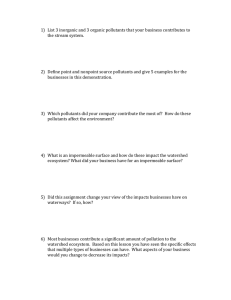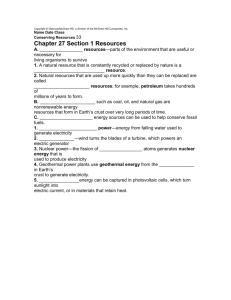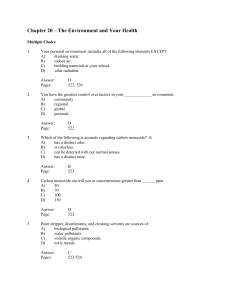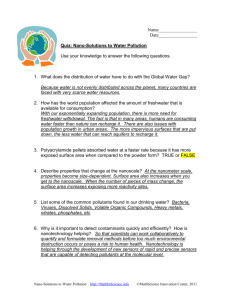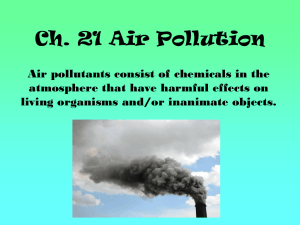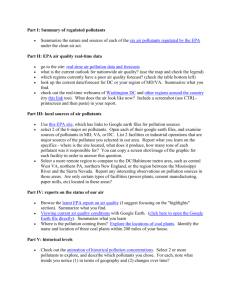File - Lisa D Griffith
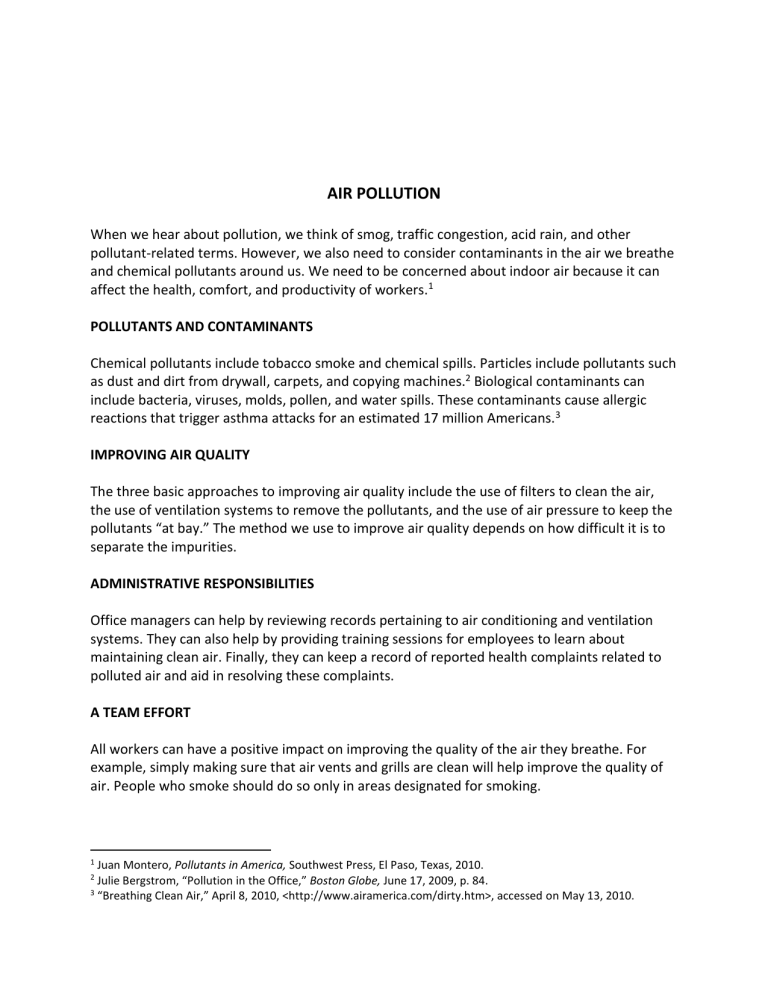
AIR POLLUTION
When we hear about pollution, we think of smog, traffic congestion, acid rain, and other pollutant-related terms. However, we also need to consider contaminants in the air we breathe and chemical pollutants around us. We need to be concerned about indoor air because it can affect the health, comfort, and productivity of workers.
1
POLLUTANTS AND CONTAMINANTS
Chemical pollutants include tobacco smoke and chemical spills. Particles include pollutants such as dust and dirt from drywall, carpets, and copying machines.
2 Biological contaminants can include bacteria, viruses, molds, pollen, and water spills. These contaminants cause allergic reactions that trigger asthma attacks for an estimated 17 million Americans.
3
IMPROVING AIR QUALITY
The three basic approaches to improving air quality include the use of filters to clean the air, the use of ventilation systems to remove the pollutants, and the use of air pressure to keep the pollutants “at bay.” The method we use to improve air quality depends on how difficult it is to separate the impurities.
ADMINISTRATIVE RESPONSIBILITIES
Office managers can help by reviewing records pertaining to air conditioning and ventilation systems. They can also help by providing training sessions for employees to learn about maintaining clean air. Finally, they can keep a record of reported health complaints related to polluted air and aid in resolving these complaints.
A TEAM EFFORT
All workers can have a positive impact on improving the quality of the air they breathe. For example, simply making sure that air vents and grills are clean will help improve the quality of air. People who smoke should do so only in areas designated for smoking.
1 Juan Montero, Pollutants in America, Southwest Press, El Paso, Texas, 2010.
2 Julie Bergstrom, “Pollution in the Office,” Boston Globe, June 17, 2009, p. 84.
3 “Breathing Clean Air,” April 8, 2010, <http://www.airamerica.com/dirty.htm>, accessed on May 13, 2010.

